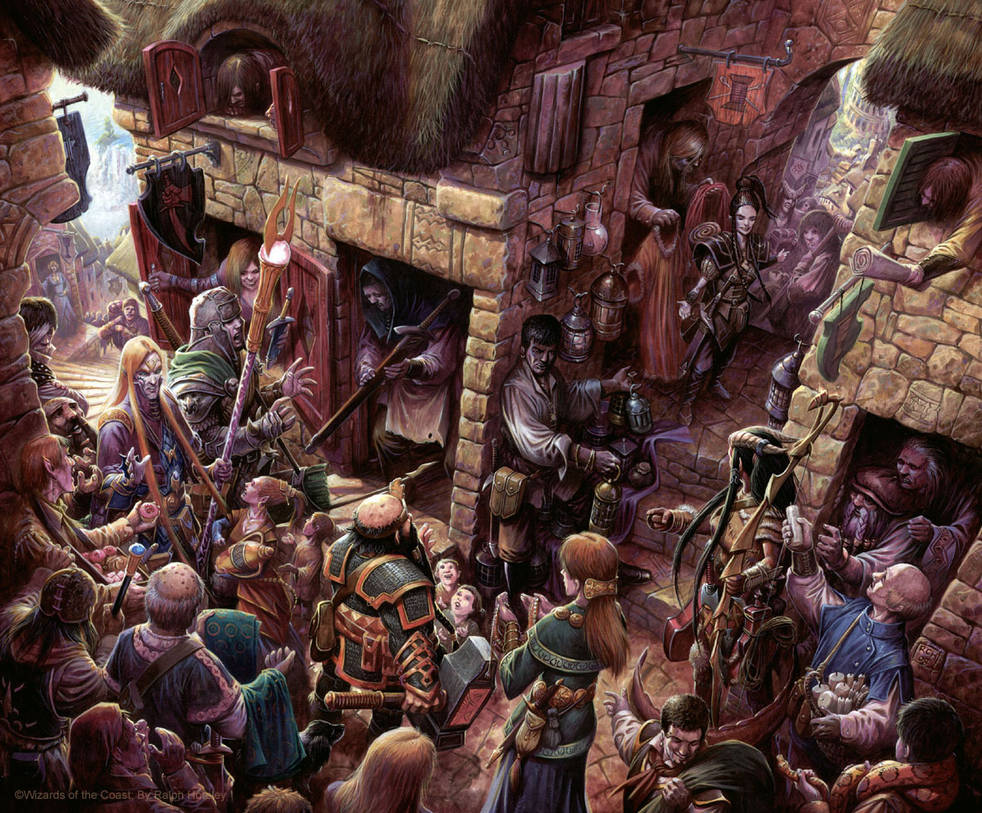Difference between revisions of "Audible Glamer (spell)"
| Line 19: | Line 19: | ||
The sound can be made to emerge from anywhere within the spell range. It can also be made to move, as though from one side of the audience to another. | The sound can be made to emerge from anywhere within the spell range. It can also be made to move, as though from one side of the audience to another. | ||
| − | The audience will have no reason to disbelieve, unless the evidence of their eyes indicates the sound is impossible. In this case, they will be able to press the sound from their minds if they make a +4 save vs. magic. Creatures of 0 or 1 intelligence cannot save against the spell. | + | The audience will have no reason to disbelieve, unless the evidence of their eyes indicates the sound is impossible. In this case, they will be able to press the sound from their minds if they make a +4 [[Saving Throws|save vs. magic]]. Creatures of 0 or 1 [[Intelligence (ability stat)|intelligence]] cannot save against the spell. |
| − | Otherwise, the glamer will serve as a distraction and will even conceal true sound. This gives a bonus of +2 hexes when calculating stealth, while attacking creatures will gain a +1 to their surprise roll. | + | Otherwise, the glamer will serve as a distraction and will even conceal true sound. This gives a bonus of +2 [[Combat Hex|hexes]] when calculating [[Stealth (sage ability)|stealth]], while attacking creatures will gain a +1 to their [[Surprise (combat)|surprise]] roll. |
<br> | <br> | ||
Revision as of 23:45, 10 March 2020
| Range | 60 ft. +10 ft. per level |
| Duration | 10 rounds per level |
| Area of Effect | equals spell range |
| Casting Time | 1 round |
| Saving Throw | negates |
| Level | bard (1st); illusionist (1st); mage (1st) |
Beguiles an audience, causing them to believe that they hear sounds made as if by multiple creatures, whether intelligent or otherwise. These sounds are indistinct — so that the sounds ‘heard’ would be that of an incoherent collection of individuals. Examples might be the roar of a crowd, marching, clanking, the chittering of beasts, the clicking of insects and so on. The sound will never seem to come from any less than a half dozen creatures.
The spell is limited in the decibel level it is capable of producing — 50 is the maximum limit, about the sound of a busy street full of carts and hawkers, or the roars of immense hippopotami. Because of this, any crowd or vast number must seem as though it were far away. At the same time, close sounds must be bare whispers, to conceal the truth that the noise being made is nonsensical. Only the fact that the sound is detectable but obscure protects its true nature.
As suggested already, the sound need not be that created by the mouths of creatures, but can be any sound that animals are able to make, either of themselves or through instruments they can manage. The spell cannot, however, produce a recognizable melody. Attempts at music will be necessarily off-beat and out of tune.
The sound can be made to emerge from anywhere within the spell range. It can also be made to move, as though from one side of the audience to another.
The audience will have no reason to disbelieve, unless the evidence of their eyes indicates the sound is impossible. In this case, they will be able to press the sound from their minds if they make a +4 save vs. magic. Creatures of 0 or 1 intelligence cannot save against the spell.
Otherwise, the glamer will serve as a distraction and will even conceal true sound. This gives a bonus of +2 hexes when calculating stealth, while attacking creatures will gain a +1 to their surprise roll.
